Top 6 DataTables Alternatives in 2026: Pros, Cons and Pricing
June 25, 2025•6 min read

I hope you enjoy reading this post. If you want us to do your frontend development or design, click here.
Author: Alex Vasylenko | Founder of The Frontend Company


DataTables has powered interactive tables on the web for over a decade. It's fast to set up, packed with features, and still widely used in legacy stacks or quick admin tools.
But for many teams, it's starting to show its age.
Modern frontend stacks have moved to React, Vue, Svelte, TypeScript, and modular architectures. And while DataTables still technically works, it no longer fits cleanly into this ecosystem. jQuery dependencies, DOM-based APIs, and performance bottlenecks at scale make it harder to succeed in serious modern apps.
That's why TFC has been helping teams move to more modern grid libraries. The new generation of tools doesn't just match DataTables — they outperform it. Some are open-source, some are commercial, but all are built for the frontend we live in now.
Modern DataTables Alternatives
Let's explore the best DataTables alternatives:
Tool | Framework Support | Pricing | Best For |
|---|---|---|---|
AG Grid | React, Vue, Angular | MIT (Community), $999/dev (Enterprise), $1498 w/ Charts | Enterprise apps, big data |
TanStack Table | React, Solid, Vue, Svelte | MIT (Free) | Custom UIs, dev control |
MUI X Data Grid | React (MUI only) | MIT (Community), $15–$49/dev/month (Pro/Premium) | React + MUI stacks |
Tabulator | Plain JS, React, Vue, Angular | MIT (Free) | Open-source, mixed stacks |
Grid.js | React, Vue, Vanilla JS | MIT (Free) | Lightweight apps, simplicity |
Handsontable | React, Vue, Angular | Commercial only — from $790/dev/year | Excel-like editing in-browser |
AG Grid — The Enterprise Workhorse
AG Grid is a battle-tested, feature-rich data grid trusted by Fortune 500s. It handles massive datasets without breaking a sweat and provides enterprise-level depth across all major frameworks, including React, Vue, and Angular. If DataTables feels like a Swiss Army knife, AG Grid is a professional-grade toolbox.
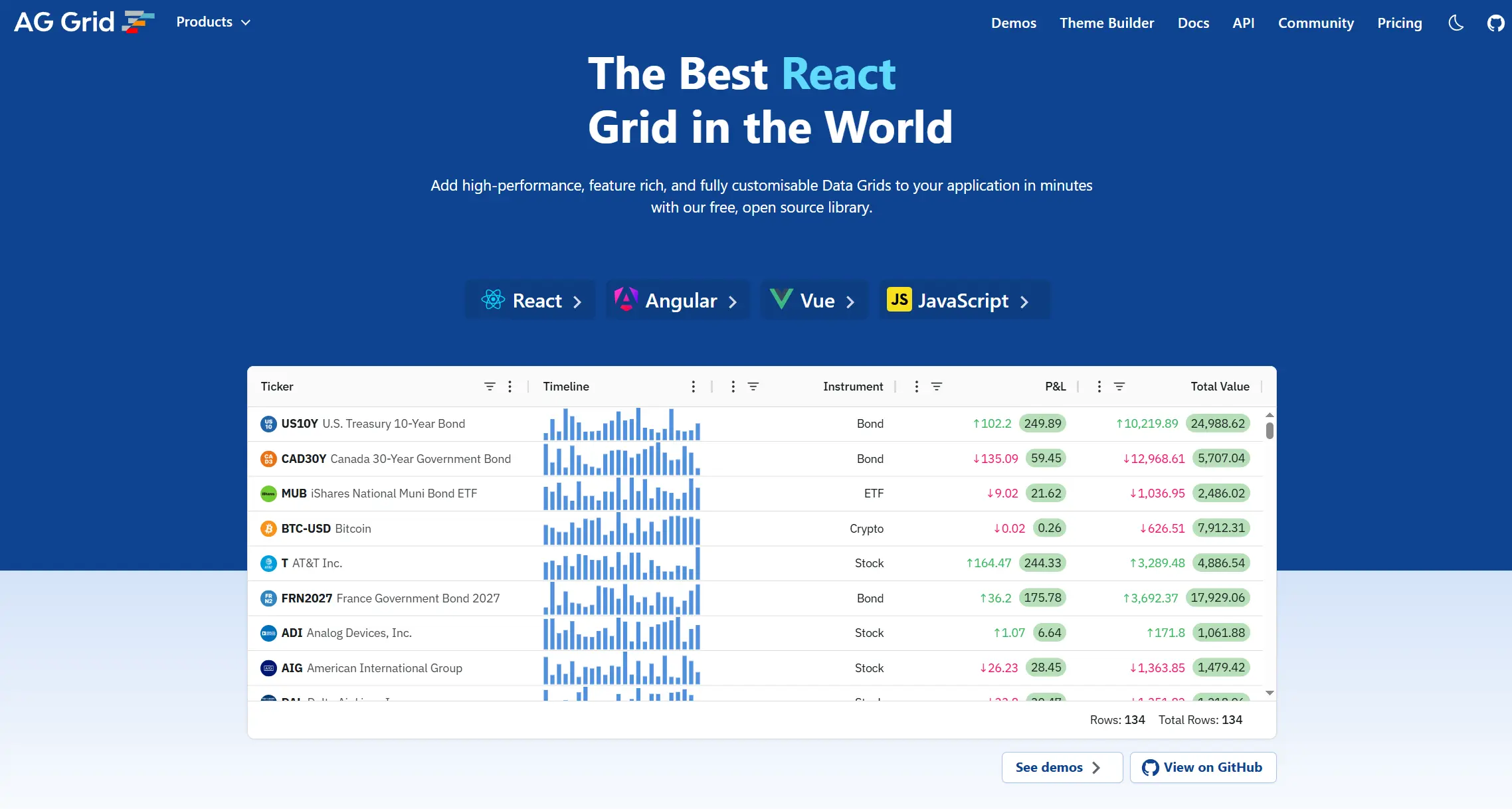
What it does better than DataTables:
Handles 100,000+ rows with virtual scrolling and zero lag
Native framework components (React, Angular, Vue) – no jQuery required
Rich editing, filtering, column grouping, range selection, Excel-style UX
Built-in export to CSV/XLSX, charts, and pivot tables (Enterprise only)
Highly customizable via modules and clean APIs
Consistent performance across browsers and devices
When to use:
1. Data-heavy internal dashboards
Need to visualize and interact with large tables, reports, or KPIs in real-time.
2. Enterprise apps with power users
Users expect spreadsheet-like features: filtering, editing, copy/paste, and grouped rows.
3. Teams building long-lived systems
You want stability, support, and a library that won't disappear in two years.
Pricing:
Community Edition: Free (MIT license) — solid for most standard use cases
Enterprise Edition: $999/developer. Includes pivoting, Excel export, charts, and other advanced features
Enterprise Bundle: $1498/developer. Includes AG Grid Enterprise & AG Charts Enterprise
Main disadvantages:
Heavy bundle size, steep learning curve, and key features locked behind a pricey enterprise license — great power, but not lightweight or cheap.

Transform your UI for peak performance!
🔹
Unlock seamless, high-performance frontend solutions tailored to your business.
🔹
Get an interface that outshines competitors and delights your users.
TanStack Table — The Headless Powerhouse
TanStack Table (formerly React Table) is a lightweight, headless data grid built for modern frameworks. It gives you full control over markup, styling, and behavior — no jQuery, no assumptions, just pure table logic. Think of it as the engine behind a table, not the car itself.
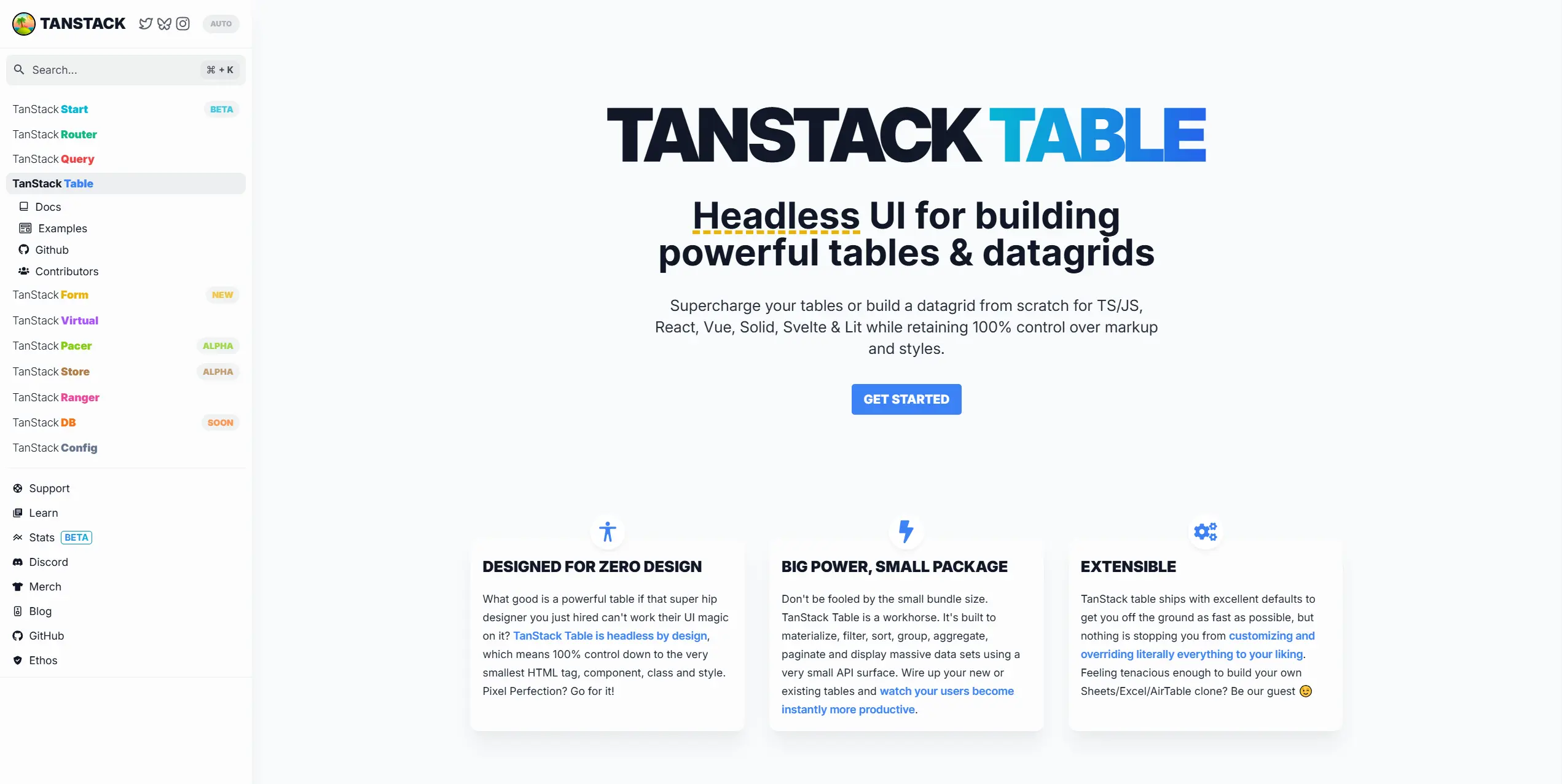
What it does better than DataTables:
Built with modern frameworks in mind – works natively with React, Solid, Vue, Svelte
Headless architecture – complete control over rendering and styling
Minimal bundle size, no DOM bloat, and zero external dependencies
Fully open-source, no paywalls or locked features
Easy to extend with custom cells, virtual scrolling, and controlled components
When to use:
1. Custom UIs in React or Solid
You need precise control over how your table looks, behaves, and integrates into your app.
2. Performance-focused apps
You want to keep the bundle size low and avoid the overhead of UI-heavy grids.
3. Component-driven teams
Your devs are comfortable building UIs from composable hooks and logic-first patterns.
Pricing:
100% open-source (MIT license)
No paid tiers or enterprise version — all features available for free
Main disadvantages:
It's not plug-and-play — it's headless, so developers build the UI from scratch.
MUI X Data Grid — The Material-First Specialist
MUI X Data Grid is the official data grid from the MUI team, designed for React apps using the Material Design system. It offers a clean UI out of the box, tight integration with MUI components, and a clear upgrade path from basic tables to full enterprise-grade features.
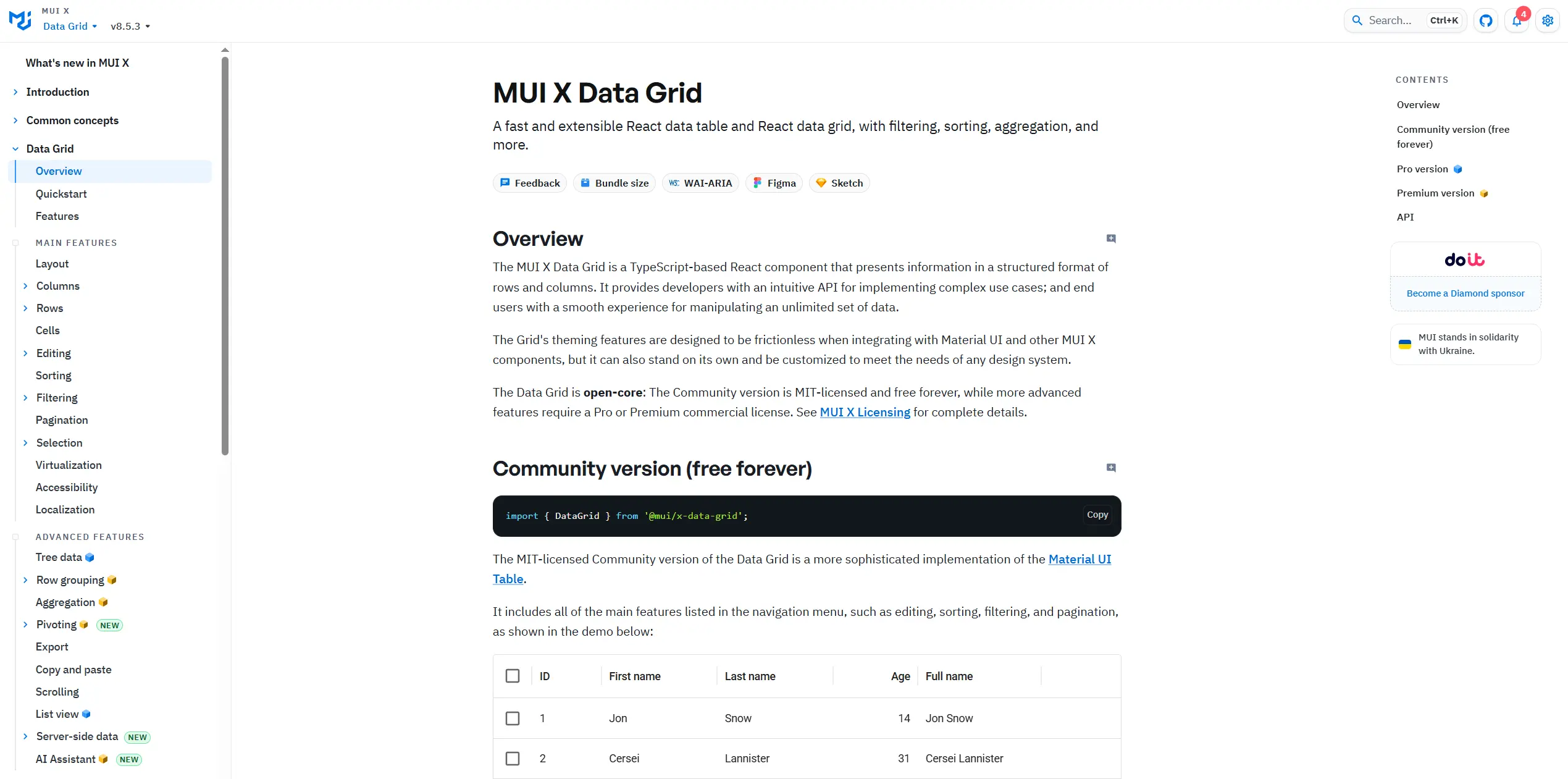
What it does better than DataTables:
Native React component with first-class TypeScript support
Seamless Material UI integration — inherits theming, styles, and accessibility
Supports virtualization, responsive layouts, and in-cell editing
Polished design system compliance without custom hacks
Full feature parity with modern grids: sorting, filtering, exporting, etc.
When to use:
Apps already using MUI
You want design and development consistency across your component stack.
Dashboards with moderate-to-large datasets
You need a performant, styled table that just works in React.
Teams that want easy theming and support
You prefer a grid that plays nicely with your UI framework and doesn't need a rewrite.
Pricing:
Community Edition: Free (MIT license) — basic features like sorting, filtering, pagination
Pro: $15/developer/month — column pinning, advanced filtering, CSV export
Premium: $49/developer/month — Excel export, aggregation, tree data, full feature access
Main disadvantages:
React-only, with advanced features locked behind pricing.
Tabulator — The Feature-Packed Underdog
Tabulator is a full-featured, zero-jQuery grid library that works out of the box with plain JavaScript and plays surprisingly well with modern frameworks. It brings rich functionality, strong performance, and deep configurability, all under a permissive open-source license.
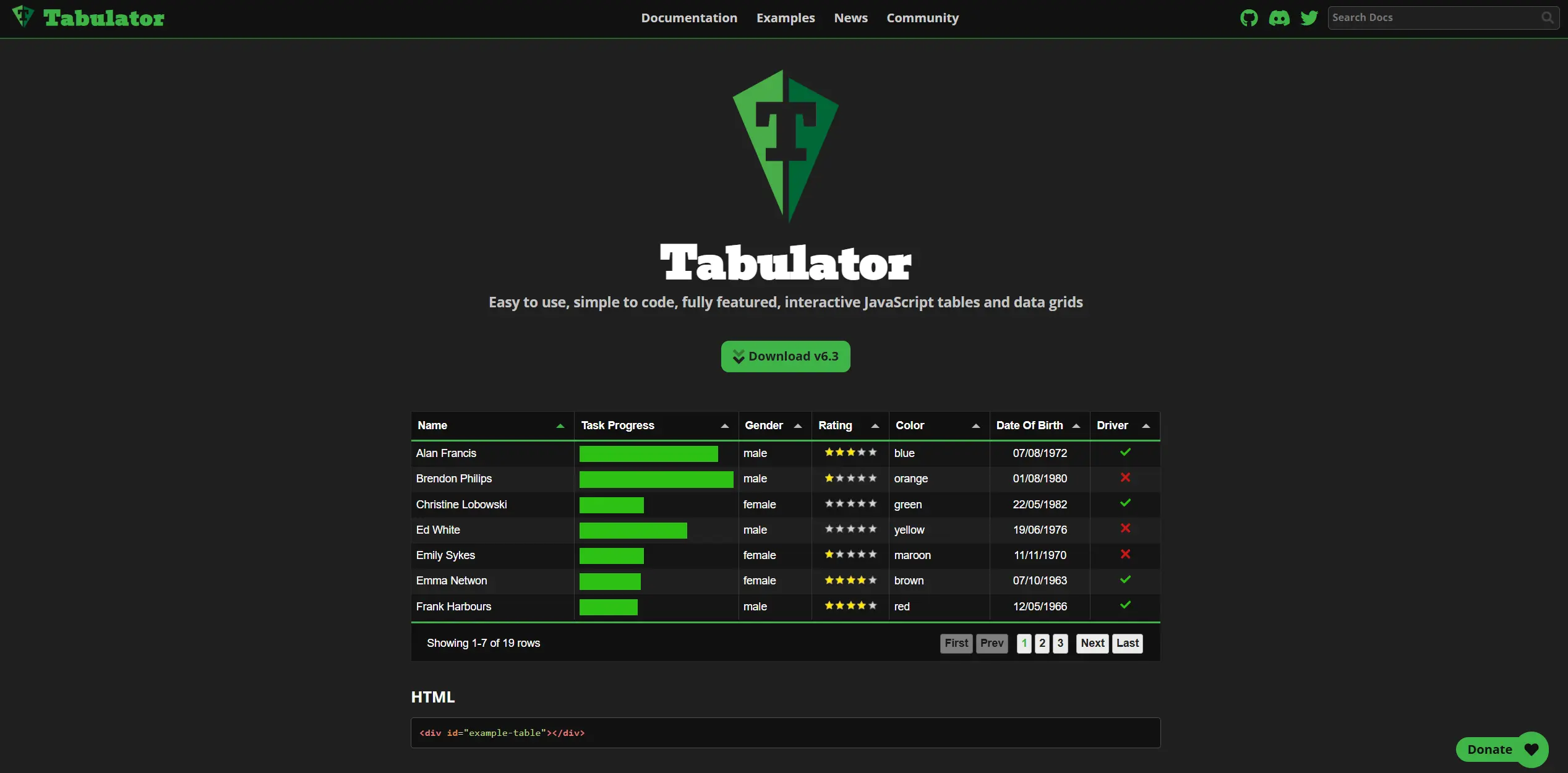
What it does better than DataTables:
No jQuery required — pure JavaScript with optional framework wrappers
Supports virtual DOM rendering for smooth performance on large datasets
Rich built-in features: editing, clipboard, responsive layout, frozen columns
Easy CSV, JSON, and XLSX export — no plugins needed
Framework-agnostic — works with React, Vue, and Angular via wrappers or native binding
When to use:
1. Mixed or migrating tech stacks
You need a modern table that works with or without a frontend framework.
2. Open-source or cost-sensitive projects
You want full power without licensing costs or usage restrictions.
3. Complex grids with deep customization.
You need editable rows, custom renderers, and responsive behavior with minimal friction.
Pricing:
Free and open-source (MIT license)
No paid tiers — all features are free to use
Main disadvantages:
Larger bundle size and less framework-native than dedicated React/Vue grids.
Grid.js — The Lightweight Generalist
Grid.js is a minimalist, framework-agnostic table library designed for simplicity and modern use. It's small, easy to set up, and integrates cleanly with React, Vue, and plain JavaScript — ideal for teams that want useful defaults without the baggage.
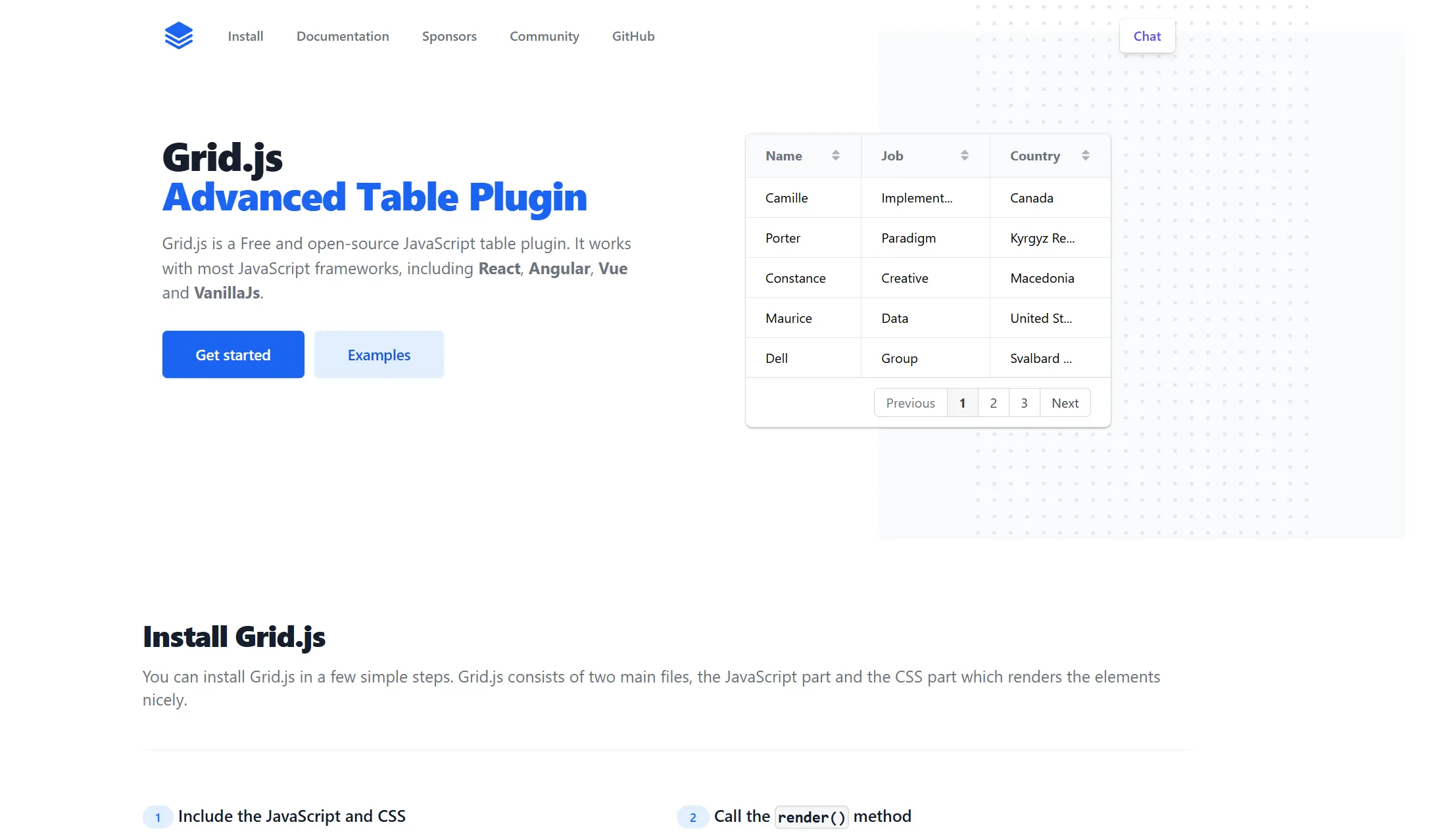
What it does better than DataTables:
No jQuery, no dependencies — written in modern JavaScript and TypeScript
Lightweight with a tiny bundle size (~12 KB gzipped)
Works with React, Vue, and vanilla JS — flexible integration options
Clean, declarative API with support for sorting, search, pagination, and plugins
Supports virtual DOM rendering (via Preact) for solid performance
When to use:
1. Lightweight apps or components
You want a modern grid that's easy to drop in without overcomplicating your stack.
2. Multi-framework environments.
You're working across React, Vue, or plain JS and need a consistent table solution.
3. Teams focused on speed and simplicity.
You value fast setup, small bundles, and enough features to cover 80% of use cases.
Pricing:
Free and open-source (MIT license)
No commercial license — all features available by default
Main disadvantages:
It is not as feature-rich as heavier grids — better for simple to medium-complexity use cases.
Handsontable — The Spreadsheet Specialist
Handsontable isn't just a data grid — it's an in-browser spreadsheet engine built for rich, Excel-like interactions. If your users need to edit, copy, paste, and manipulate tabular data with precision, this is one of the most powerful options available.
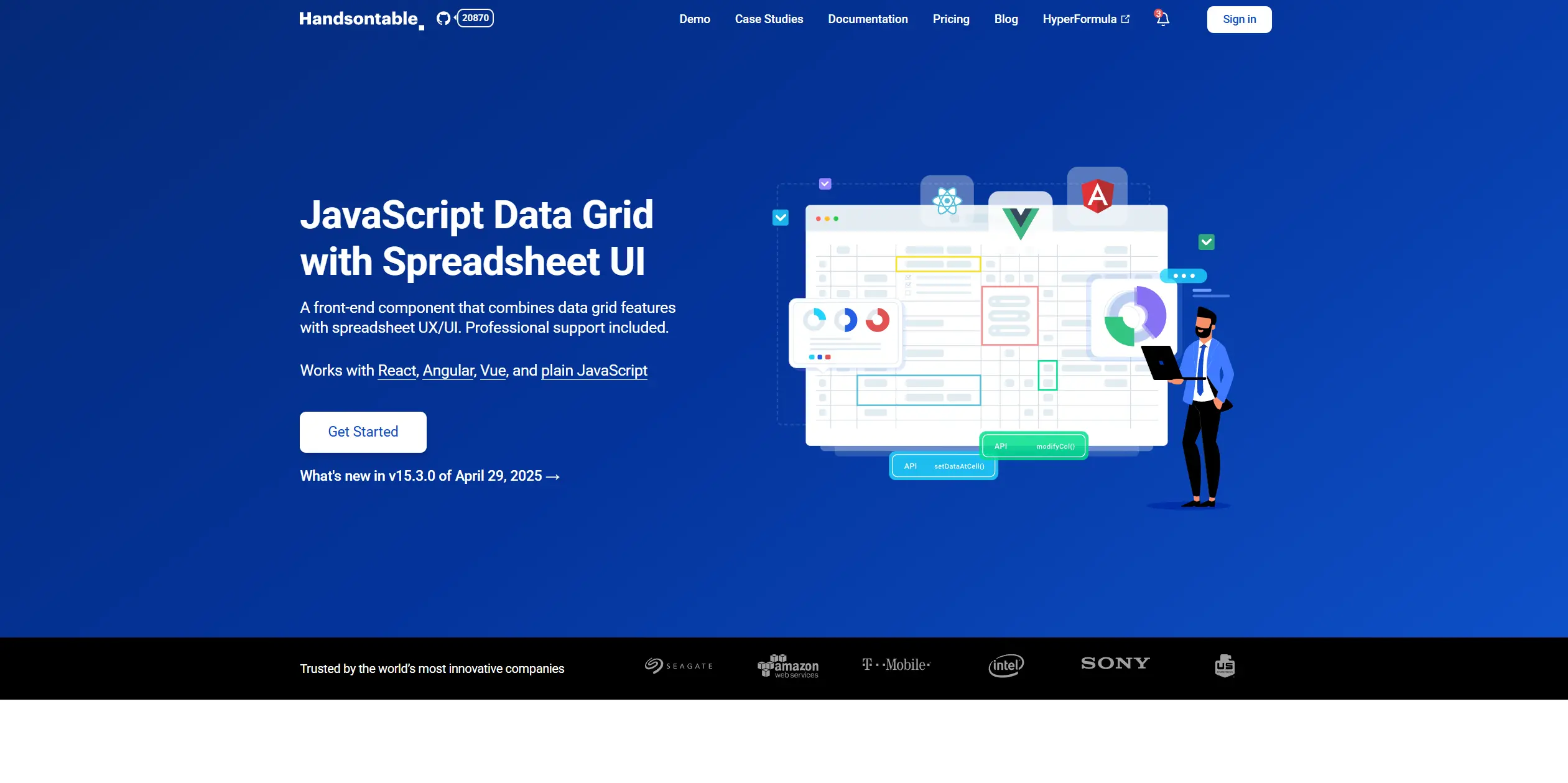
What it does better than DataTables:
Built-in spreadsheet-style editing, copy/paste, keyboard nav, and formulas
Highly interactive UX that mimics Excel, including cell validation and undo/redo
Can handle hundreds of thousands of cells efficiently
Native wrappers for React, Vue, and Angular
Supports data validation, dropdowns, and complex cell editors
When to use:
1. Data-heavy apps that require manual data entry or editing
Think financial tools, configuration UIs, or admin panels with complex input needs.
2. Replacing Excel in-browser
Users need familiar spreadsheet behaviors, not just data viewing.
3. Business tools with bulk editing or modeling workflows
You want to eliminate back-and-forth between exports and spreadsheets.
Pricing:
Free for non-commercial and evaluation use
Commercial license starts at $790/developer/year (Developer plan)
Higher tiers are available with priority support and enterprise features
Main disadvantages:
Commercial-only for business use and heavier than traditional grids due to its rich editing layer.
Not Sure Which Grid Fits Your Stack?
Book a FREE 1-hour call with TFC. We’ll help you pick the one that won’t cost you a rewrite in 18 months.
Key Pain Points of DataTables
Let's summarize the pain points that often push teams to use DataTables alternatives:
1. Poor Performance with Large Data
Once your table reaches a few thousand rows, performance starts to slow down. Without server-side setup, search and rendering can lag. There's no virtual scrolling, so big datasets push the browser to its limits.
2. jQuery Dependency
DataTables relies on jQuery, which most modern apps have already dropped.
3. Clunky Developer Experience
It's not built for React, Vue, or any modern component system, making advanced features feel harder than they should be.
4. Outdated Styling Approach
While it supports Bootstrap themes, styling DataTables isn't smooth. Modern tools support design systems, CSS-in-JS, and scoped styles — DataTables doesn't.
5. Paywalled Features
The basics are free, but features like in-table editing require a commercial license. If you're paying anyway, it's worth considering a modern grid that offers better integration, performance, and support under one clean license.
Conclusion
I've worked with DataTables for years, and I understand why it remains popular. It's familiar, fast to drop in, and gets the job done for basic use cases. But if you're building a modern product, you already know that familiarity isn't a strategy.
Today's frontend needs better performance, cleaner integration, and flexibility that jQuery plugins simply can't offer. That's why so many teams are moving to the modern grid. They want to future-proof their stack and free up dev hours for things that matter.
Choosing the right table tool isn't just about features. It's about balance. Between cost and capability. Between speed and scale. Between comfort and long-term maintainability. Pick wrong, and you'll pay for it later. Pick the right one, and you save time and money.
If you're unsure which direction to take — or want a second opinion before you commit — get in touch. I'll help you evaluate your options, weigh cost vs. value, and make the table investment that pays off.
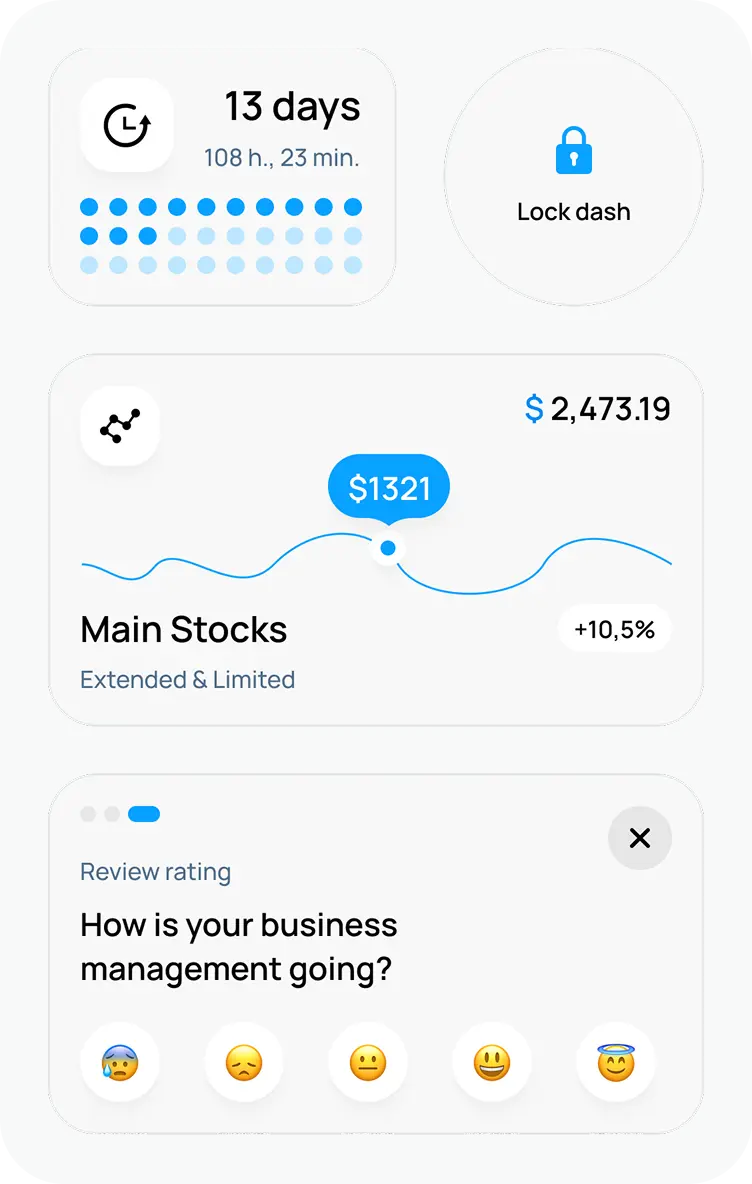
Unlock the full potential of your product

Boost customer retention & satisfaction

Become more competitive on the market

Move to the latest technologies stacks

Improve usability & visual appeal
FAQ

Alex Vasylenko is the founder of The Frontend Company, DBC and several other successful startups. A dynamic tech entrepreneur, he began his career as a frontend developer at Deloitte and Scandinavia's largest banking company. In 2023, Alex was honored as one of 'Top 10 Emerging Entrepreneurs' by USA Today.
RATE
Rate this article please
This will help us provide more useful information.
982 ratings, average 4.98 out of 5
